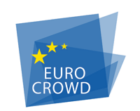Over the past few months, we have examined the historical development of crowdfunding across the EU and the varied approaches Member States have taken in implementing the European Crowdfunding Service Providers Regulation (ECSPR). Unfortunately, it remains evident that national perspectives dominate over a harmonised EU approach, which undermines the core intentions of the legislation.
Diverging National Approaches and Challenges
The ECSPR aimed to establish a unified regulatory framework for crowdfunding services across the EU, including uniform requirements for platform operation, authorisation, supervision, and transparency. However, Member States have adopted divergent approaches, leading to significant inconsistencies in implementation. These discrepancies are detrimental to achieving the harmonisation that ECSPR envisioned and pose operational challenges for platforms operating across borders.
National Competent Authorities (NCAs) are central to implementing ECSPR, yet anecdotal evidence suggests that many NCAs lack the capacity or resources to adequately guide the sector. From our interactions with stakeholders and market participants, it is clear that this inability to provide consistent, reliable guidance creates uncertainty and hampers growth.
Fragmentation and Regulatory Competition
A newly commissioned study by EUROCROWD in collaboration with PwC Legal, titled “Crowdfunding in the EU: Key Legal, Regulatory, and Tax Issues,” highlights the significant national variations in implementing ECSPR. Some Member States have interpreted the legal text restrictively or incorporated additional regulatory requirements (known as “goldplating”), while others have delayed meaningful adoption due to political or bureaucratic inertia. These differences have created opportunities for regulatory competition, as some jurisdictions position themselves as more favourable for licensing.
According to the European Securities and Markets Authority (ESMA), as of August 2023, 44 Crowdfunding Service Providers (CSPs) have been licensed. However, the distribution is highly uneven:
- Netherlands: 12 CSPs
- France: 10 CSPs
- Spain: 8 CSPs
- Sweden: 4 CSPs
- Estonia and Belgium: 2 CSPs each
- Germany: 1 CSP
- Italy: 0 CSPs
Germany and Italy—two of Europe’s largest economies and previously strong crowdfunding markets—have seen minimal activity, highlighting the delays and barriers in these jurisdictions. While some Member States exploit regulatory flexibility to attract platforms, it remains to be seen whether these environments will provide long-term stability and competitiveness.
New Regulations Adding Complexity
The introduction of additional regulatory frameworks, such as the Markets in Crypto-Assets Regulation (MiCAR), is set to add new layers of complexity for CSPs. These developments may exacerbate existing challenges, such as regulatory arbitrage, and further fragment the market. Without clearer guidance from the European Commission (EC), ESMA, and the European Banking Authority (EBA), it is unlikely that harmonisation will be achieved in the near term.
The Path Forward
Despite these challenges, the evolving regulatory landscape offers opportunities for growth and innovation. A professional and scaling crowdfunding market is essential to incentivise NCAs to improve their capacity and engage more effectively with market participants. However, significant hurdles remain:
- CSPs face capital requirements to adapt their business models to ECSPR.
- Uncertainty and resistance to the new rules are driving many smaller platforms out of the market.
This transitional phase, while painful for some, could ultimately lead to a more competitive and professional crowdfunding sector. It is critical for stakeholders to work collaboratively to address these challenges and foster a unified market that benefits all participants.
Note: The accuracy of ESMA’s CSP list remains contested, as some entries lack details about NCAs despite being marked as licensed. See our second ECSPR Monitor for additional insights.



